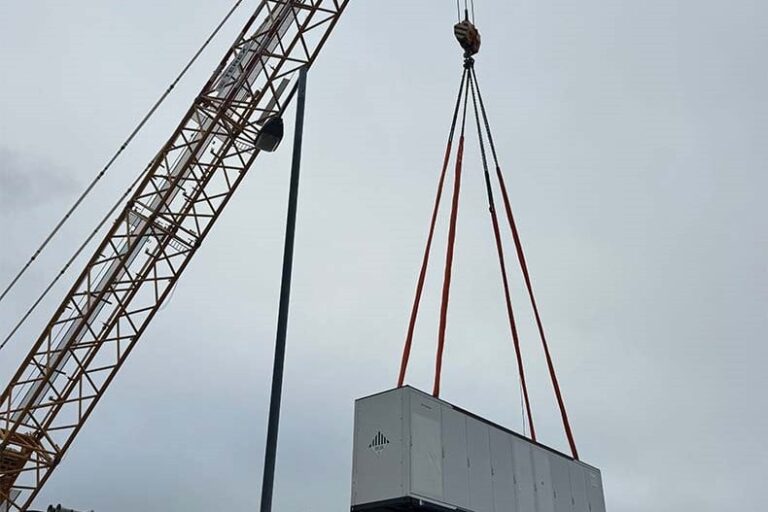The first batteries have arrived at SSE Renewables’ battery storage project in Ferrybridge, West Yorkshire, where installation will continue until the end of June. A total of 136 units will be installed at the site, which will be SSE’s second operational battery storage facility.
The project, located at the company’s former coal-fired power station Ferrybridge, is being developed in collaboration with battery technology supplier Sungrow Power Supply and construction partner OCU Services and will utilize Sungrow’s liquid-cooled energy storage system called ‘PowerTitan’.
With a capacity of 150MW/300MWh, the Ferrybridge site will be three times the size of SSE’s flagship battery storage site in Salisbury, which became operational on April 15.
Construction of Ferrybridge began in August 2023 and will be completed later this year. SSE is also working on a 320MW battery project in Monk Fryston, North Yorkshire, expected to be completed in up to two years.
Ferrybridge BESS project manager Craig Jackson said: “It is great to see the first battery units arriving on site as we move through the construction phase of the project. Over the coming weeks we will be working with our construction partners OCU Energy and local contractors to complete the installation of all battery units and a 132kV transformer at the Ferrybridge site.”
Richard Cave-Bigley, director of development and construction – solar and batteries, SSE Renewables, added: “We are delighted to have achieved another major milestone in our Ferrybridge battery storage project with the arrival of the first batteries on site.
“Ferrybridge will once again be a key location for the UK’s energy system, providing the flexible electricity storage the country needs to fully utilize its growing renewable energy sources such as wind and solar.”
Reaching net zero requires renewable energy generation, such as solar and wind energy, which can often be intermittent and variable. As such, battery storage plays a key role in the transition to green energy due to its ability to hold and release energy as needed.
Effective use of battery storage also provides cost savings and benefits. Co-location – the process of developing multiple generation projects or combining different technology types at the same grid connection point defined by National Grid – with battery storage further reduces costs and increases energy security.
At the recent Renewable Energy Revenues Summit in London, Francisco del Rio de Pablo, who works for NTR, said Britain is currently the most advanced battery co-location market in Europe.


